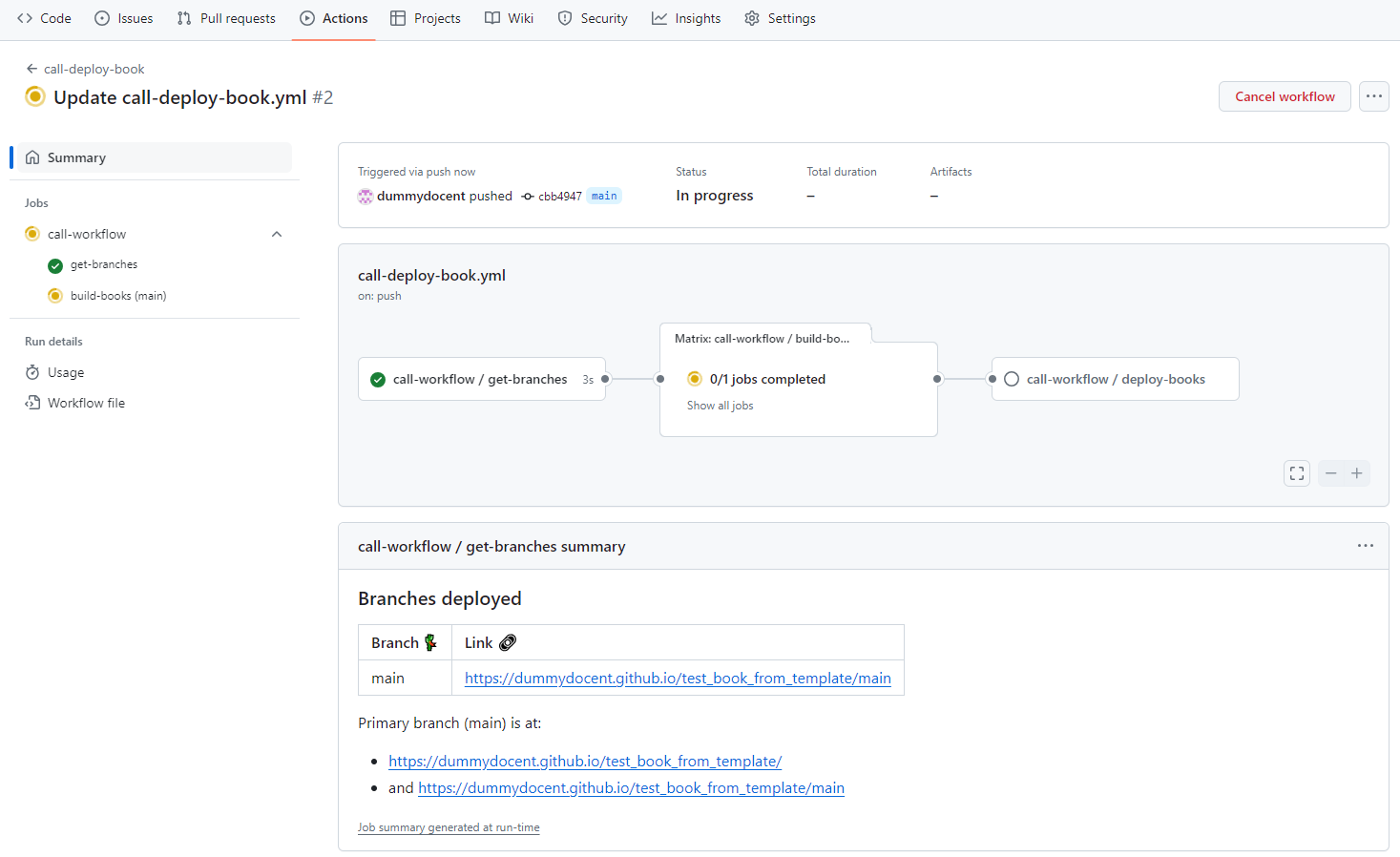The template allows you to start your own Jupyter Book and hosting that book online without knowledge on Git, the Jupyter book package, python or anaconda. It doesn't elaborate on the collaborative functionalities of Git or how to edit the book.
- To get started making your Jupyter Book with our functionalities, use the template book as template:
- Fill in a repository name, this name will be used in the future url of your book:
- Set source for GitHub pages to under
Settings-Pages-Build and deployment-Source-GitHub Actions. As long as you don't do this your book is not published online:
- Make a edit to the book by editing one of the files in the
book/subdirectory (available underCode) or by running the workflow fromActions-All workflows-call-deploy-book-Run workflow-Run workflow. Wait a few minutes for the website to be deployed, if you're curious, you can see the progress and result underActions-All workflows-call-deploy-book-<the most recent workflow run>(The first commit might have failed because github pages wasn't activated at the time ofInitial commit):
- When the workflow has finished, visit your build book at
https://<username or organiszation_name>.github.io/<repository_name>(case sensitive). For our example it is https://dummydocent.github.io/test_book_from_template/ for the shown repository. These links are visible in the action as well, as shown in the figure above or in the GitHub repository website which you set in step 3.
Additional tip:
Set the repository website as your GitHub Pages website under
Code- About - - Website - Use your GitHub Pages Website




